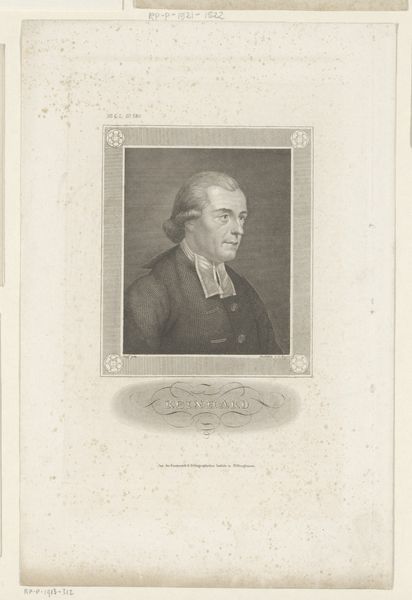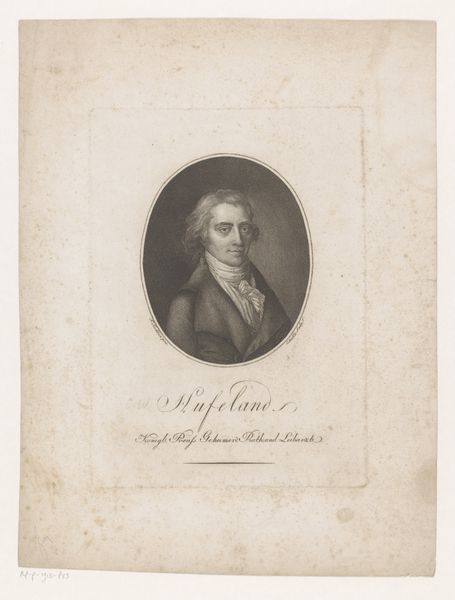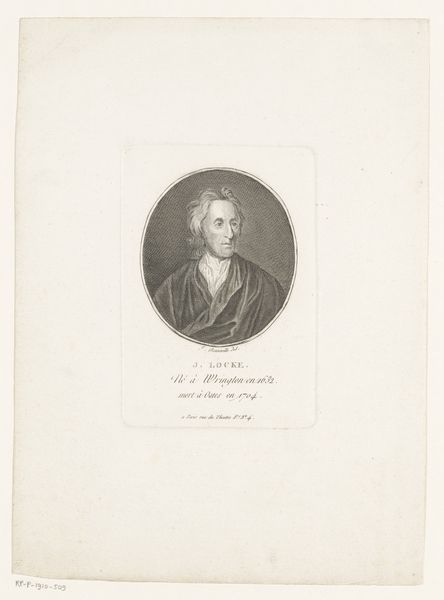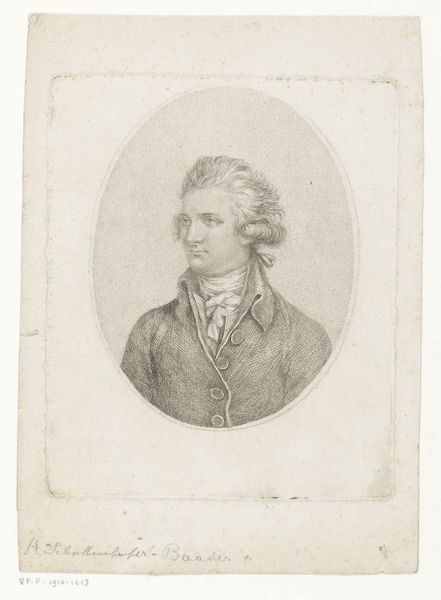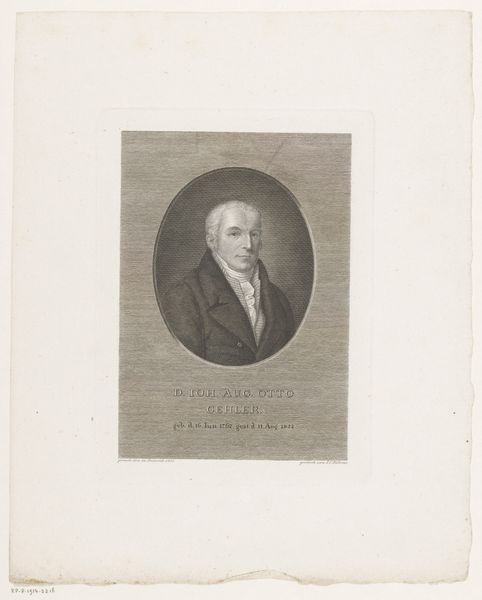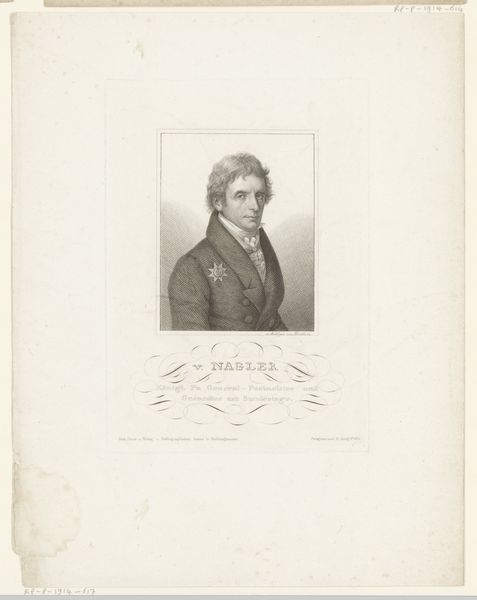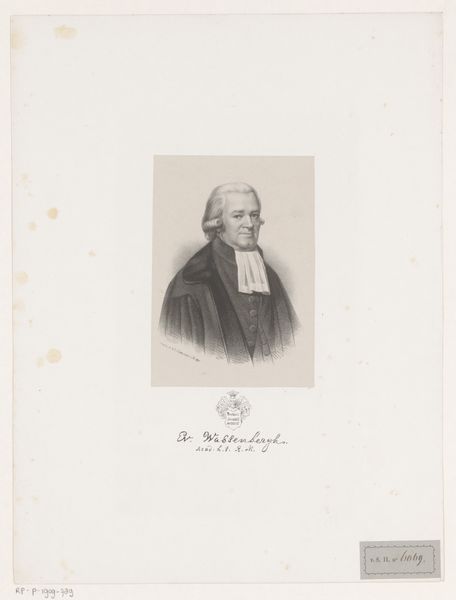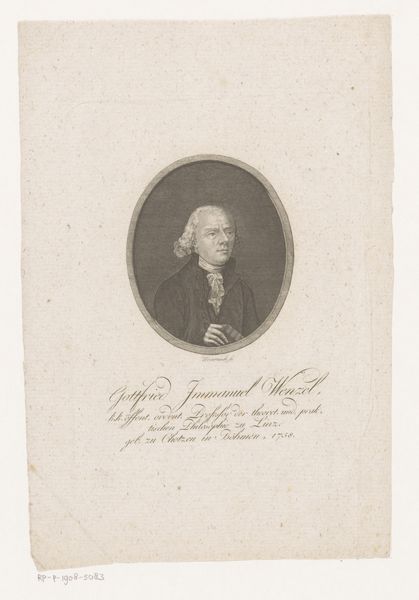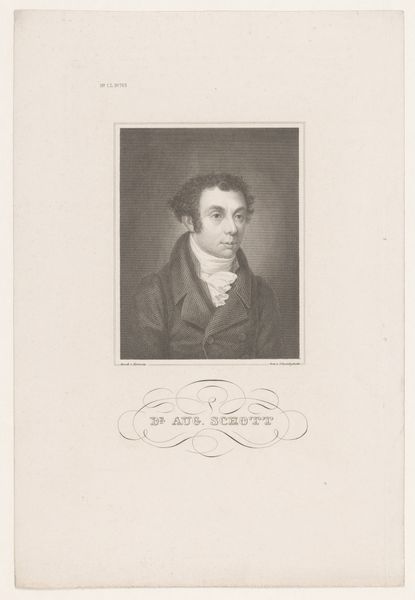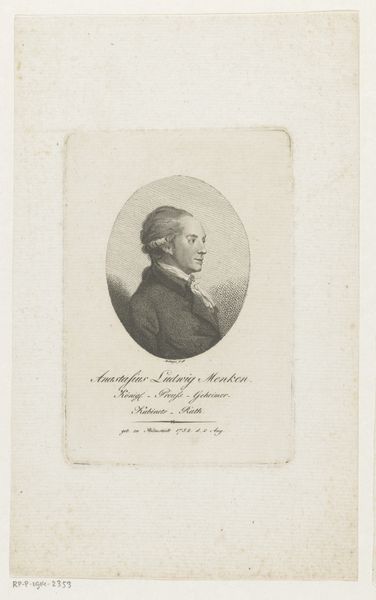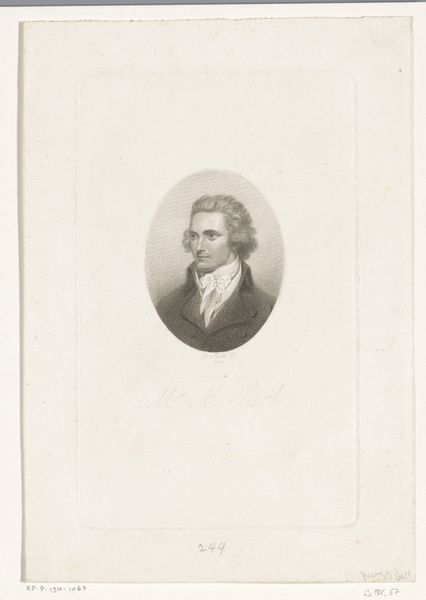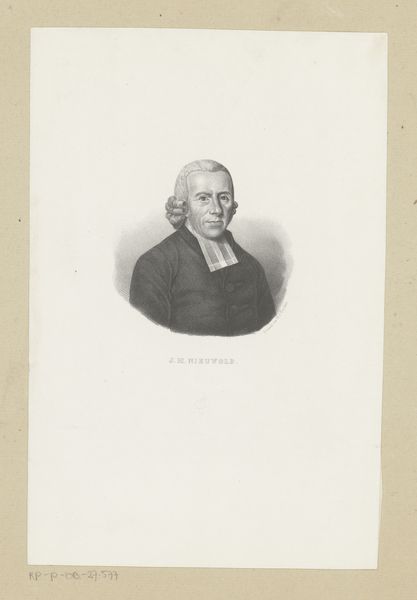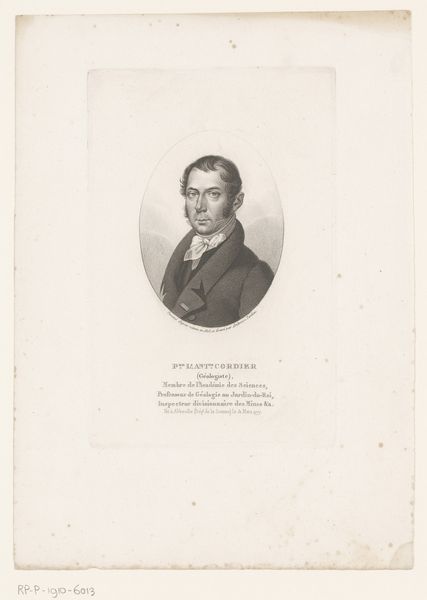
print, metal, paper, engraving
#
medal
#
neoclacissism
# print
#
metal
#
paper
#
engraving
Dimensions: height 186 mm, width 124 mm
Copyright: Rijks Museum: Open Domain
Editor: Here we have Johann Georg Nordheim's print, "Portret van Anselm Franz, Freiherr von Bentzel-Sternau," dating from around 1829 to 1840, done in engraving on paper and metal. The portrait has a rather stern feel to it. What jumps out at you when you look at this work? Curator: Well, the immediate formality certainly speaks to the sitter's status and the conventions of the era, nodding toward Neoclassicism, but let's consider the context of portraiture in relation to power. How does the image, its distribution via print, reinforce or perhaps even challenge existing hierarchies? Note the details—the medal, the tailored coat—and consider how they contribute to constructing an identity rooted in privilege. Editor: I see what you mean. It’s like every element is carefully chosen to project authority. But being a print, wouldn't it also be more accessible to a wider audience than a painted portrait, perhaps diluting that sense of exclusive power? Curator: Exactly. That tension is key. While the portrait ostensibly celebrates an individual, the print medium opens questions about accessibility, about who has access to this image and what they might make of it. Who benefits from this circulation, and whose voices are perhaps being silenced by this kind of representation? We must consider this in relation to the period's political and social currents. How did portraits function within the broader theatre of social class and burgeoning nationalist sentiment? Editor: That's really insightful. I was focused on the individual depicted, but thinking about its function as a print, and its circulation within society really reframes my understanding. Curator: Precisely! By understanding the intersecting forces at play in the creation and consumption of this artwork, we move beyond a simple appreciation of its aesthetic qualities and uncover deeper narratives about power, identity, and social change.
Comments
No comments
Be the first to comment and join the conversation on the ultimate creative platform.
